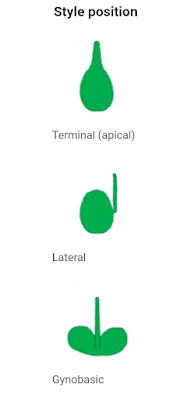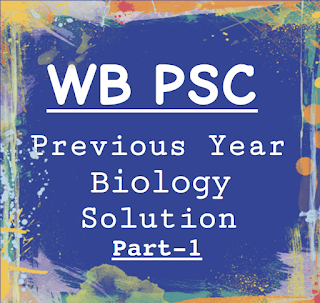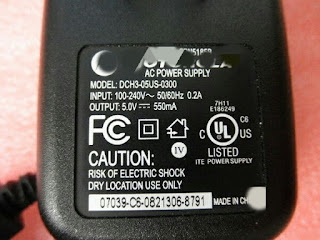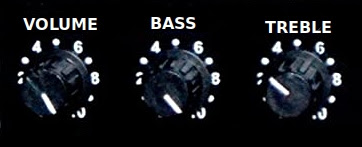West Bengal PSC Previous Year BIOLOGY Queations with Answers Part-1
In this Post we list West Bengal Public Service Commission's asked BIOLOGY related questions topic wise with detail answers. This is Part-1.
CLICK HERE for Part-2
CLICK HERE for Part-3
CLICK HERE for Part-4
We have mentioned the Exam names and Years in which the Questions are asked.
It is actually the part of WBPSC Previous Year SCIENCE Series.
Previous Year PHYSICS (Click Here)
Previous Year CHEMISTRY (Click Here)
Previous Year COMPUTER (Click Here)
Botany
Q. Where do you see stomata in lotus leaf?
[WBPSC Miscellaneous Exam-2012(2nd)]
- Only upper surface of leaf
- Only lower surface of leaf
- Both lower and upper surface of leaf
- None of the above
A. Only upper surface of leaf
Explanation:
Stomata: Stomata are the small openings found mainly in leaves of plant. Plant exchange gasses (e.g. CO2, O2, water vapour) through stomata.
In aquatic plants stomata are generally present on the upper surface of leaf.
Stomata in lotus leaf are seen only on upper surface of leaf.
Q. A short day plant has critical day length of 14 hours. It will flower when the day length is
[WBCS Preliminary Exam-2016]
- 15 hours
- 18 hours
- 12 hours
- 16 hours
C. 12 hours
Explanation:
Flowering in plants is sensitive to the dark period (night time. But, in conventional way, we tell this things in respect of day light.
In this respect, there are three categories of plant.
(1) Short-Day plant
(2) Long-Day plant
(3) Day-Neutral plant
(1) Short-Day plant: short-plant needs more night time i.e. short-day time for flowering.
Short-Day plants only flower when the day time less than Critical day length (a certain day time).
(2) Long-Day plant: This type of plant need less night time i.e. long day time for flowering.
Long-Day plants only flower when day time is greater than the Critical day length (a certain day time).
(3) Day-Neutral plant: Flowering in this type of plant is not actually depends on the night length i.e. day-length also.
In the given question , the plant is short-day plant and critical day length is 14 hours.
So, for flowering in this plant, day length should be less than 14 hours.
Therefore, if a short day plant has critical day length of 14 hours, it will flower when the day length is 12 hours.
Q. Gynobasic style is present in which family?
[WBCS Preliminary Exam-2016]
- Mawaceae
- Solanaceae
- Labiatae
- Orchidaceae
C. Labiatae
Explanation:
On the basis of attachment of style with the ovary, there are some types (e.g. Terminal, lateral, Gynobasic).
 |
| Image Source: Wikipedia |
Gynobasic style means the style originates from the mid basal part of the ovary.
Gynobasic style is present in Labiatae (or Lamiaceae) family.
Q. An example of midified underground stem is
[WBCS Preliminary Exam-2017]
- Carrot
- Potato
- Ground nut
- Turnip
B. Potato
Explanation:
- Carrot is midified root.
- Potato is modified stem.
- Turnip is modified root.
- Edible part of ground nut is seed.
Q. The nature of stele in primitive vascular plants was
[WBCS Preliminary Exam-2017 ]
- Prostele
- Siphonostele
- Dictyostele
- Atactostele
A. Prostele
Explanation: Stele is a column of tissue that consists of vascular tissues (xylem and phloem) and ground tissues.
The nature of stele in primitive vascular plants was prostele.
Photosynthesis
Q. Which metal is present in chlorophyll?
[WBCS Preliminary Exam-2016]
- Iron
- Zinc
- Aluminium
- Magnesium
D. Magnesium
Explanation: The metal Magnesium (Mg) is present in chlorophyll.
Farming
Q. Who is known as the father of White Revolution in India?
[WBPSC Miscellaneous Exam-2012(1st)]
- Verghese Kurien
- M. S. Swaminathan
- P. G. Bantol
- Sam Pitroda
A. Verghese Kurien
Explanation: "White Revolution" in India is about milk. This transformed India from a milk deficient nation to world's largest milk producer.
Verghese Kurien is known as Father of white revolution in India.
Q. Green Revolution was confined to
[WBCS Preliminary Exam-2015]
- Rice in West Bengal
- Cotton in Maharashtra
- Wheat in Panjab and Haryana
- Oil seeds in Andhra Pradesh
C. Wheat in Panjab and Haryana
Explanation:
Green Revolution is a term used to represent the agricultural revolution in India.
Agricultural scientist M. S. Swaminathan is known as Father of Green Revolution.
Green revolution was happened due to adoption of high yielding seeds, tractor, advanced irrigation facilities, pesticides, fertilizers etc.
Cell and Tissue
Q. Which tissue is the 79th organ of the human body?
[WBPSC Miscellaneous Exam-2018]
- Mesentery
- Adenoids
- Colon
- Vulva
A. Mesentery
Explanation: Mesentery is the 79th organ of human body.
Mesentery is an organ that attaches the intestines to the posterior abdominal wall in the human.
 |
| Simplified diagram of Mesentery |
Q. How many important muscles are there in the human body?
[WBPSC Miscellaneous Exam-2018]
- 530
- 630
- 730
- 830
B. 630
Explanation:
There are around 650 skeletal muscles in typical human body.
The number of important muscles is not clearly defined.
So, most probable answer may be 630.
Q. What is the name of the smallest muscle in the human body?
[WBPSC Miscellaneous Exam-2018]
- Buttok Muscle
- Glutens Muscles
- Sartorius Muscles
- Stapedius Muscles
D. Stapedius Muscles
Explanation: The name of the smallest muscle in human body is Stapedius Muscle.
Q. Hair in human body is made of the same substance as
[WBPSC Miscellaneous Exam-2018 ]
- Knee
- Teeth
- Finger nails
- Skin
C. Finger nails
Explanation:
In human body hair and finger nails are made of a tough protein named Keratin.
Q. During cell division, DNA synthesis takes place in
[WBCS Preliminary Exam-2015]
- Interphase
- Anaphase
- Prophase
- Telophase
A. Interphase
Explanation:
During cell division, DNA synthesis is taken place in Interphase.
Generally Interphase has 3 stage. They are G1, S, G2.
In S(synthesis) stage of Interphase, DNA synthesis is taken place.
Q. The turn of DNA helix measures
[WBCS Preliminary Exam-2015]
- 34Å
- 3.4Å
- 24Å
- 44Å
A. 34Å
Explanation:
DNA= Deoxyribonucleic Acid
The length of 10 base pair is 34Å. The double helix makes one complete turn about its axis every 10.4-10.5 (normally 10 is considered) base pairs.
So, the turn of DNA helix measures 34Å.
Q. A carcinoma is a cancer originating from
[WBCS Preliminary Exam-2016]
- Epithelial tissue
- Connective tissue
- Muscular tissue
- Nerve tissue
A. Epithelial tissue
Explanation:
A carcinoma is a cancer originating from Epithelial tissue.
Epithelial tissue are spread throughout the body. It forms covering of all body surface, lining of body cavities and hollow organs.
Q. A muscle that is consciously controlled
[WBCS Preliminary Exam-2016]
- Striated voluntary
- Striated involuntary
- Non-striated voluntary
- Non-striated involuntary
A. Striated voluntary
Explanation:
Q. Grub is the larva of
[WBCS Preliminary Exam-2016]
- Insect
- Crustacea
- Beetle
- Songes
C. Beetle
Explanation:
- Grub is the larva of Beetle.
- The pupa of it is called Chrysalis.
Q. Crossing over occurs during meiosis at
[WBCS Preliminary Exam-2017]
- Leptotene
- Anaphase-I
- Pachytene
- Diakinesis
C. Pachytene
Explanation:
Crossing over: Crossing over refers the exchange of genetic material during meiosis cell division between two non sister chromatids of homologous chromosomes.
Prophase-I of Meiosis is consist of 5 stages. These are Leptotene, Zygotnene, Pachytene, Diplotene, Diakinesis.
In Pachytene stage of Prophase-1 of Meiosis, crossing over occurs.
Q. Barr body is absent in somatic cell of
[WBCS Preliminary Exam-2017]
- Klinefelter syndrome individual
- Tripple X syndrome individual
- Turner syndrome individual
- Sub-human mammalian female individual.
C. Turner syndrome individual
Explanation:
A female(human) somatic cell has 22 pair of autosome and two X chromosomes. Normally one X chromosome remain condensed and inactive. This condensed and inactivated X chromosome in female cell is called Barr body.
- Turner syndrome: A chromosomal disorder in which a female is born with only one X chromosome.
Somatic cell of Turner syndrome individual (actually female) has no Barr body because the cell has only one X chromosome. - Klinefelter syndrome: When a male is born with an extra X chromosome (i.e. XXY), this disorder is known as Klinefelter syndrome.
Somatic cell of a male should only have XY chromosome. - Triple X syndrome: A female somatic cell normally has two X chromosome.
In Triple X syndrome (a genetic disorder), a female has three X chromosomes.
Q. The number of milk teeth in man is
[WBCS Preliminary Exam-2018]
- 28
- 29
- 20
- 12
C. 20
Explanation:
- The number of milk teeth in man is 20.
- In medical terminology milk teeth is called Deciduous teeth.
- Among the 20 milk teeth 10 are on upper jaw and 10 are on lower jaw.
- Generally, most of them erupt by the age 2½ years.
- An adult has 32 permanent teeth.
Q. Muscle fatigue is due to accumulation of
[WBCS Preliminary Exam-2018]
- Carbon dioxide
- Creatinine
- Lactic acid
- Ethyl alcohol
C. Lactic acid
Explanation:
Muscle fatigue is due to accumulation of Lactic acid.
Lactic acid is a byproduct of anaerobic respiration. When body needs high amount of energy (in the time of intense physical work out) but the oxygen supply is less, then huge amount of lactic acid is formed. This lactic acid is the cause of muscle fatigue.
WBPSC Previous Year BIOLOGY Questions with Answers Part-2
WBPSC Previous Year BIOLOGY Questions with Answers Part-3
WBPSC Previos Year BIOLOGY Queations with Answers Part-4
WBPSC Previous Year SCIENCE Question with Solution
WBPSC Previous Year PHYSICS Questions with Solution
Thank You
Wish, You Meet Your Target.





Comments
Post a Comment